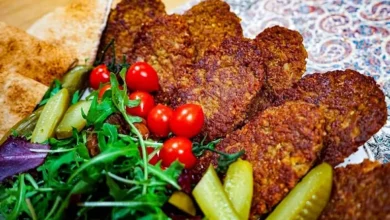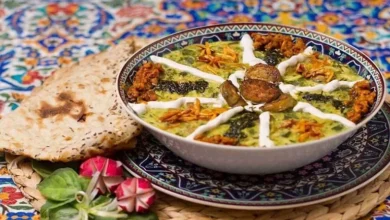Celery Stew: A Traditional Persian Delight
Celery Stew, known as ‘Khoresht Karafs’ in Persian, is a cherished traditional dish in Iranian cuisine that embodies the rich flavors and diverse culinary techniques of the region. Often compared to the famous ‘Ghormeh Sabzi’, Celery Stew holds its own with a unique blend of herbs and spices that give it a distinctive and irresistible taste. While it might be overshadowed by its more popular counterpart, those who take the time to appreciate Celery Stew find it to be a delightful addition to their culinary repertoire, offering a healthy and flavorful dining experience.
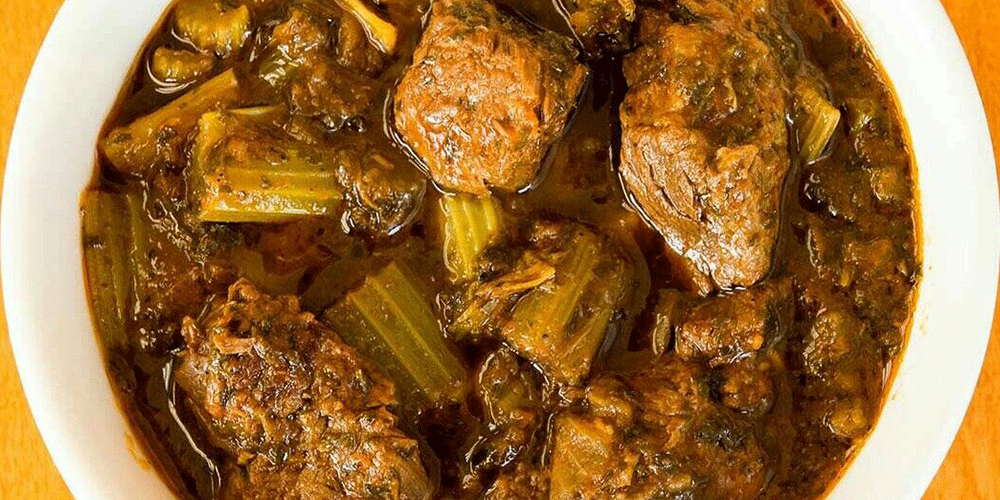
Ingredients
Serves 4-6 people
| Ingredient | Amount |
|---|---|
| Diced stewing beef | 300g |
| Celery stalks | 400g |
| Fresh mint | 50g |
| Fresh parsley | 150g |
| Medium onions | 2 |
| Cooking oil | As needed |
| Turmeric | As needed |
| Salt | As needed |
| Black pepper | As needed |
| Lemon juice or verjuice | To taste |
Instructions
Step 1: Preparing the Celery – Begin by separating the celery stalks from the leaves, then wash and cut them into pieces about 1 to 1.5 cm thick. Set aside for later use.
Step 2: Sautéing the Onions – Finely chop the onions, heat a suitable cooking pot over medium heat, and add some cooking oil. Add the chopped onions and sauté until they become soft and translucent. Sprinkle in some turmeric and continue to sauté until the turmeric is absorbed.
Step 3: Prepping the Meat – Cut the stewing beef into medium-sized cubes. Avoid overly large or small pieces to ensure even cooking and a pleasing appearance. Rinse and add the meat to the pot.
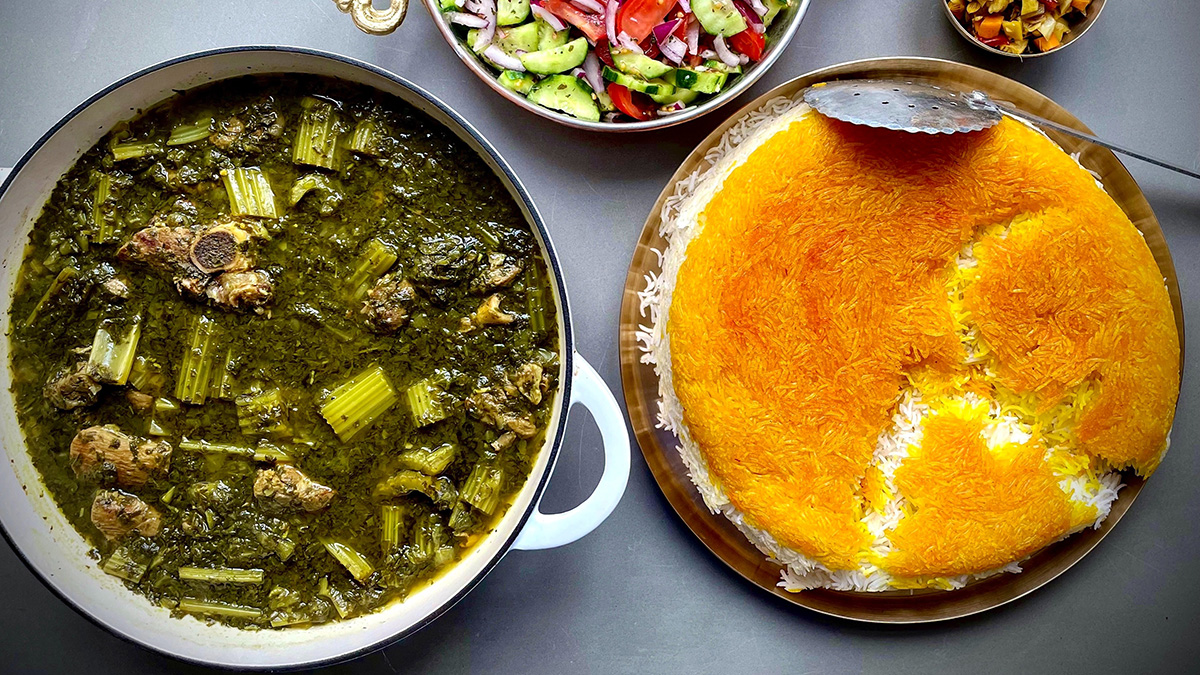
Step 4: Searing the Meat – Sear the meat by sautéing it gently until it changes color and slightly browns. Be cautious not to over-sear as this can make the meat tough.
Step 5: Adding Tomato Paste – Optional for enhanced flavor and color, add a tablespoon of tomato paste to the meat and onions, and sauté lightly to remove any raw taste from the paste.
Step 6: Incorporating the Celery – If you used tomato paste, ensure it is well combined. Then, add the celery stalks to the pot, sautéing lightly to help them retain their shape during cooking.
Step 7: Simmering the Stew – Pour in 2-3 cups of water, ensuring the celery and meat are partially submerged. Allow them to simmer over a low flame until tender, approximately 2 hours.
Step 8: Sautéing the Herbs – While the main ingredients are cooking, finely chop the celery leaves, mint, and parsley. Sauté them in a small amount of oil until slightly wilted.
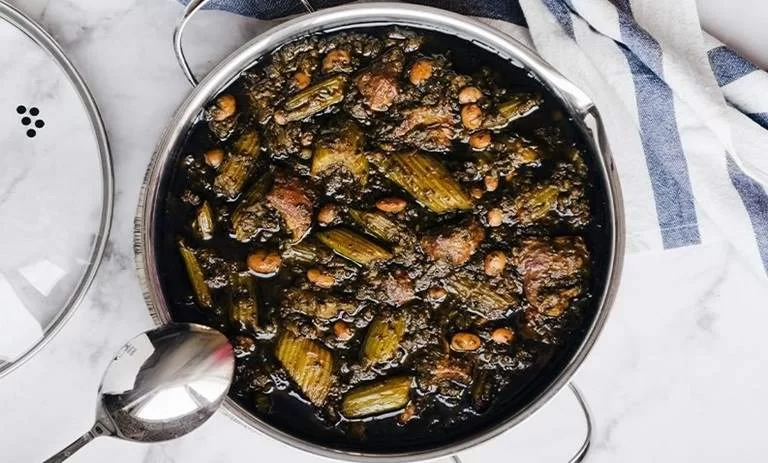
Step 9: Adding the Herbs – Introduce the sautéed herbs to the pot during the final hour of cooking. For a darker stew, sauté the herbs longer.
Step 10: Finishing Touches – As the meat becomes tender, season the stew with salt and black pepper to taste. Add your desired amount of lemon juice or verjuice. Allow the stew to simmer for an additional 45 minutes to fully develop the flavors.
Step 11: Serving the Stew – For a more aesthetically pleasing presentation, aim for a stew with less broth. Serve hot alongside steamed rice or traditional Persian ‘ketteh’ rice.
Pro Tips
For the best Celery Stew, use lamb shoulder or beef chuck for a balanced texture and flavor. Fresh herbs are crucial; dried versions lack the vibrant taste. Adjust the sourness with either lemon juice or verjuice, and experiment with a touch of fenugreek for a unique twist. Always prepare on a low simmer to avoid toughening the meat, and avoid over-stirring once the herbs are added.
Frequently Asked Questions
Yes, you can substitute beef with chicken for a lighter version. Use about 800g of chicken for a similar portion size, and adjust cooking times as chicken cooks faster than beef.
Celery Stew pairs excellently with steamed basmati rice or Persian ‘ketteh’ rice, often accompanied by pickled vegetables or a simple salad for added freshness and balance.
Absolutely, the flavors of Celery Stew deepen overnight, making it a perfect make-ahead dish. Store it in the fridge for up to 3 days, or freeze for extended storage, reheating gently before serving.



